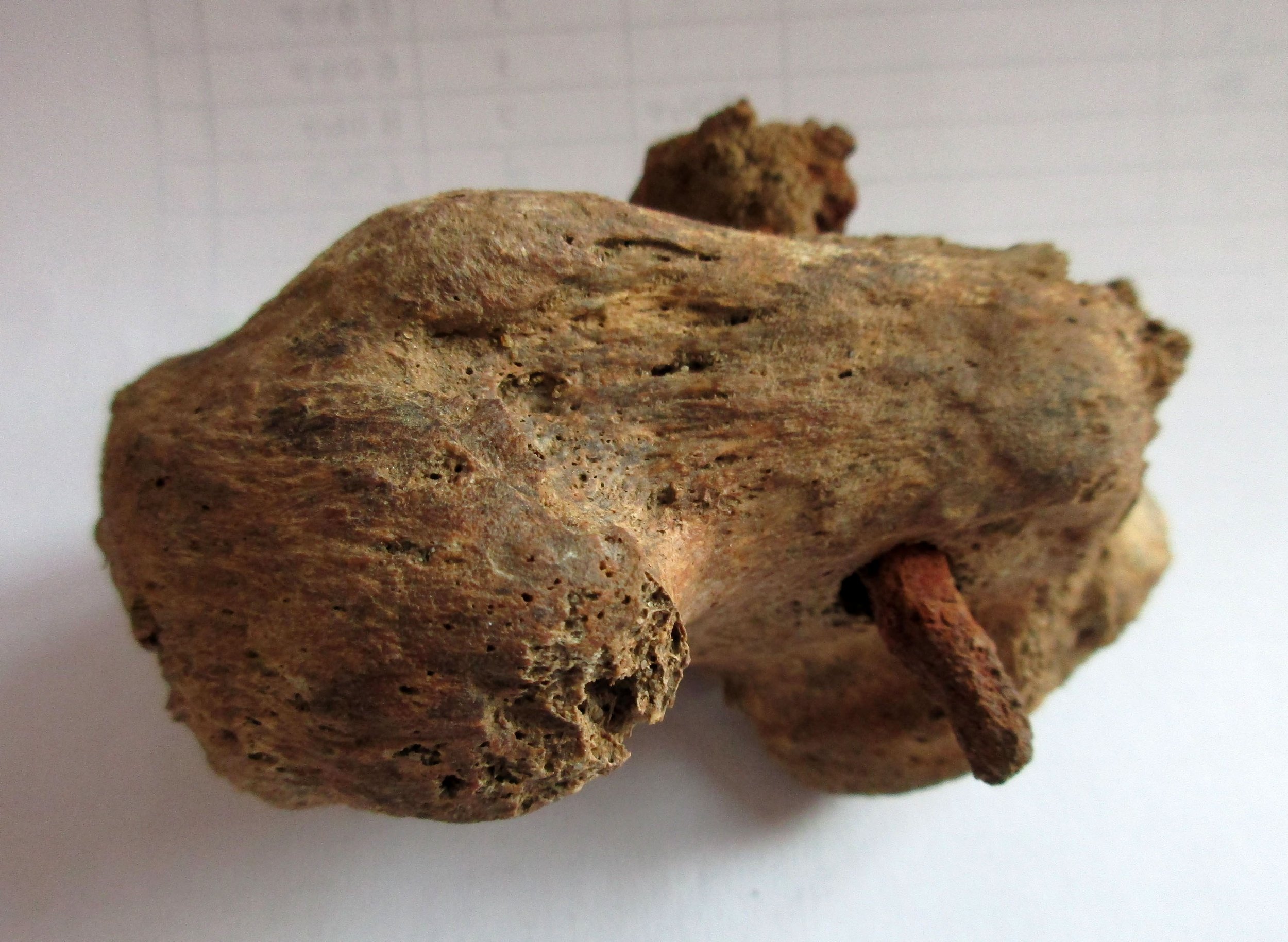The Cambridgeshire Crucifixion: Albion Archaeology on TV and in the British Museum
Albion Archaeology discovered a large, previously unknown Roman roadside settlement in 2017 while carrying out an excavation in Fenstanton, Cambridgeshire on behalf of Tilia Homes (previously Kier Living). Finding Roman burials on such a site is common, and this was no exception – yet one of the people buried at Fenstanton had been crucified.
The skeleton was that of a man aged roughly 25–35, with signs of poor dental health and arthritis that were common among many of the people buried here. There were also signs of thinning on his lower legs, which may have been caused by infection or inflammation or perhaps by local irritation from being bound or shackled.
Twelve nails that were found around the skeleton suggest that he had been placed on a board or a bier (probably not in a coffin), but the 13th had passed horizontally through his right heel bone (calcaneum). It seems implausible that the nail could have been accidentally driven through the bone during construction of the timber support on which the body was placed – indeed, there are even signs of a shallow second hole that suggests an unsuccessful first attempt to pierce the bone.
In January 2024, a documentary about the crucifixion and subsequent scientific analysis of the remains aired on BBC Four, having been created for PBS. It is still available to view on BBC iPlayer.
The remains of the crucified individual are currently on display at the British Museum as part of their Legion: Life in the Roman Army exhibition, until the 23rd June 2024.




